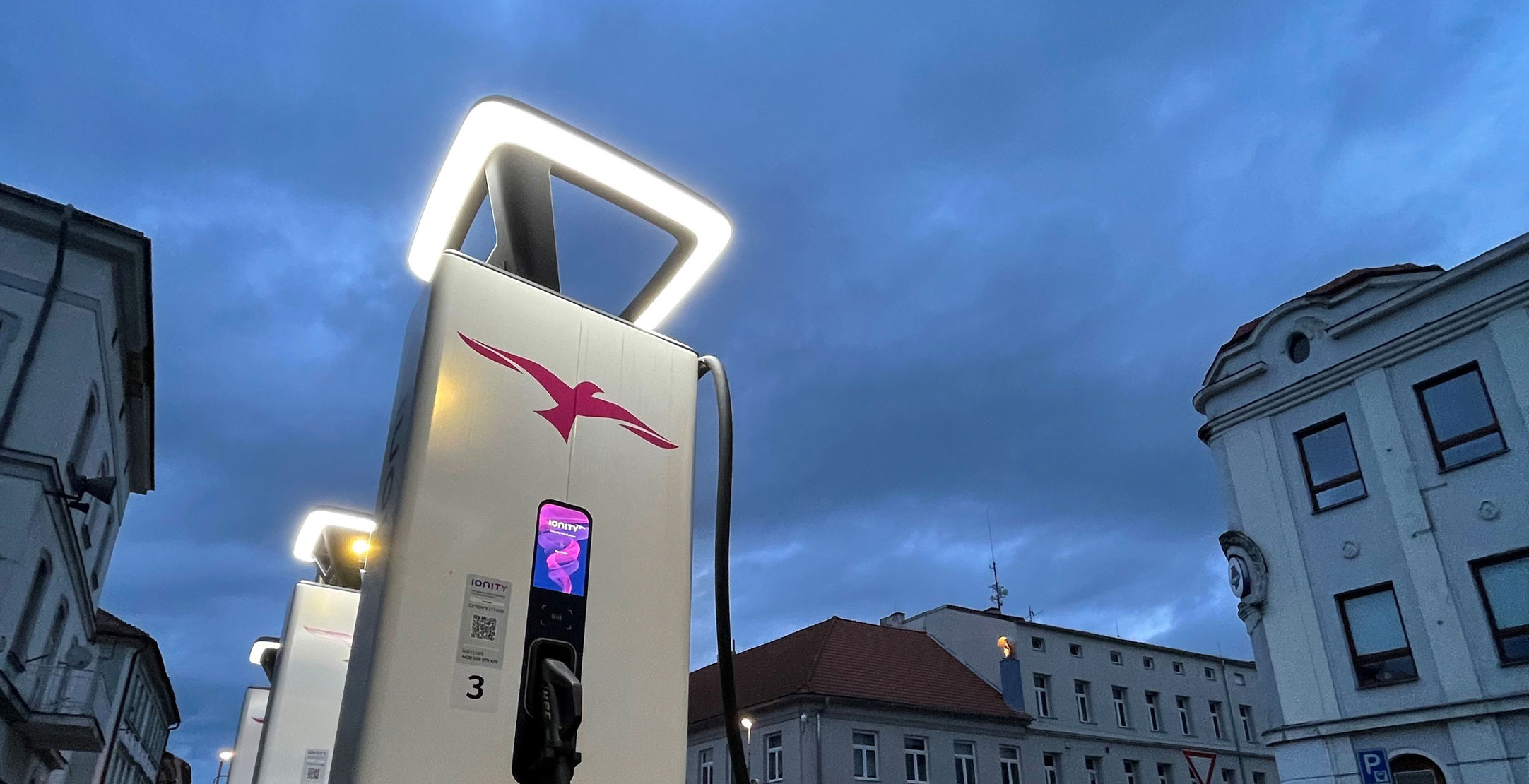Renewable Energy Straight from The Source
One way to offer 100% green energy through our charging stations is to bypass the electricity grid completely and plug-in directly to a renewable energy source like wind, water or solar. But like all things that are too good to be true, this option, while sometimes possible, isn’t always practical. Let us explain why.

A quick stopover at Lovosice
In 2020, IONITY built their first charging station that’s directly connected to a renewable power station, sidestepping the electrical grid entirely. Located in the Czech town of Lovosice, right off the D8/E55 highway, it’s supplied by a hydroelectric plant from right across the river.
The Lovosice charging station is unusual in several ways. For one, it is located in the town of Lovosice, rather than on the highway, as is usual for our charging locations. With the Lovosice exit from the D8/E55 highway just two kilometers away, this still makes it convenient for highway travellers, looking to recharge themselves and their cars, as there are plenty of cafés and restaurants around.
Another deviation from a typical IONITY station is that this location is shared with the Tesla Supercharger location and municipal chargers. And it’s not just the location we share, but the crucial infrastructure, too.
Unlike most of our locations, it is not connected to the power grid, instead of relying on 100% renewable energy from the nearby Lovosice hydroelectric plant. Together with Tesla and the town of Lovosice, we’ve built a direct connection to the hydro plant, which also feeds the nearby ice hockey and football stadiums.
This project allowed us to successfully venture into uncharted territory. And while there’s plenty we learned from this endeavour, we also learned that this is not an across-the-board solution that we can copy-paste onto our regular locations.
Where the electricity flows straight from the source: Lovosice charging station.

EV-charging with IONITY means to have the freedom to travel long distance across Europe
So why can't it work everywhere
We need to remind ourselves of the idea of the electrical grid as a “lake”. Energy flowing in and out of the grid must be kept in balance, much like the streams flowing in and out of an actual lake to keep its level steady. Even if you can’t trace each electron to its source, you can make sure that you add enough “clean” electricity to the grid to offset the electricity you pull out of it. While this gives us the certainty of how the energy is being produced, there are certain challenges that come with it.
Connecting an IONITY charging station to a national or regional grid doesn’t create much of a problem. Even a high-powered charging station like IONITY’s doesn’t make a significant difference to the overall levels of the grid.
Direct connection to a renewable resource, however, makes keeping the balance much more difficult. Unless a really massive battery – one that would be able to supply the whole charging location – is installed, the consumption from the charging station needs to be balanced in real time by increasing (or decreasing) the power output from the source. We were able to achieve exactly that in Lovosice.
The Lovosice project works primarily due to two unique attributes. First, hydroelectric power is easy and quick to regulate; the increase or decrease in power being easily controlled by changing the output of the turbine. Other renewable sources, especially solar and wind, are much harder to regulate both up and down – you can’t increase their power during insufficient sunlight or wind, and it’s hard to reduce it when there’s less demand.
Second, the charging location is just over a kilometre away from the hydroelectric plant itself, which enables quick regulation. This is important, as the power plant and the chargers need to be perfectly in sync, else we risk that the power will get fed back to the grid. While it may sound like a good thing, it can actually cause problems with grid control and excess electricity in the grid. In the end, we could actually be fined by the grid operator for this. That’s why we’d rather avoid this.
Another interesting aspect of the Lovocise installation is that we share the substation with Tesla and municipal chargers, which are installed at the same site. The substation has three transformers, one for IONITY, one for Tesla and one for municipal chargers.
It is very rare to have a hydroelectric plant or other suitable source of renewable energy so close to a charging location. In most cases, the sources are either too far away or unsuited for direct connection (e.g. wind and solar). In some cases, we are able to use them to supplement the power from the grid. For example, at some of our locations in Spain, where we use solar power for slow charging of the on-site batteries and then boost the power of the charging stations.
In most cases, we will still have to rely on the electric grid to power our chargers. We will continue to test the possibilities of the on-site batteries at our stations. We haven't discounted the opportunity to connect directly to a clean power source again, but it will not be fundamental to IONITY’s operations moving forward.
Instead, we will keep providing 100% renewable electricity by means of “refilling the lake” of the public grid from renewable sources to offset the consumption of IONITY’s stations. This way, we can continue to provide clean energy to our customers anywhere, anytime.

